In bathroom design, tile can be a critical element. A tile that works well with the other fixtures and materials in the room or that injects something personal, comfortable, or eye-catching will easily elevate the look of your bath. Bathrooms rely on tiles in various ways, including showers, flooring, and backsplashes at the sink. Understanding the factors that go into tile design can assist you with selecting an option that reflects your unique style and taste.

Color
The color palette you choose for your bathroom tile can set the tone for the entire space. Color has the effect of evoking emotions and setting a mood, so what you select should be carefully considered for this reason. Neutral hues like soft whites, subtle grays, or warm beiges will create a timeless look that won’t ask too much in terms of commitment. These classic tones create a great, blank backdrop for layering other textures and patterns over through decor and towels, creating a sense of ease that never goes out of style.
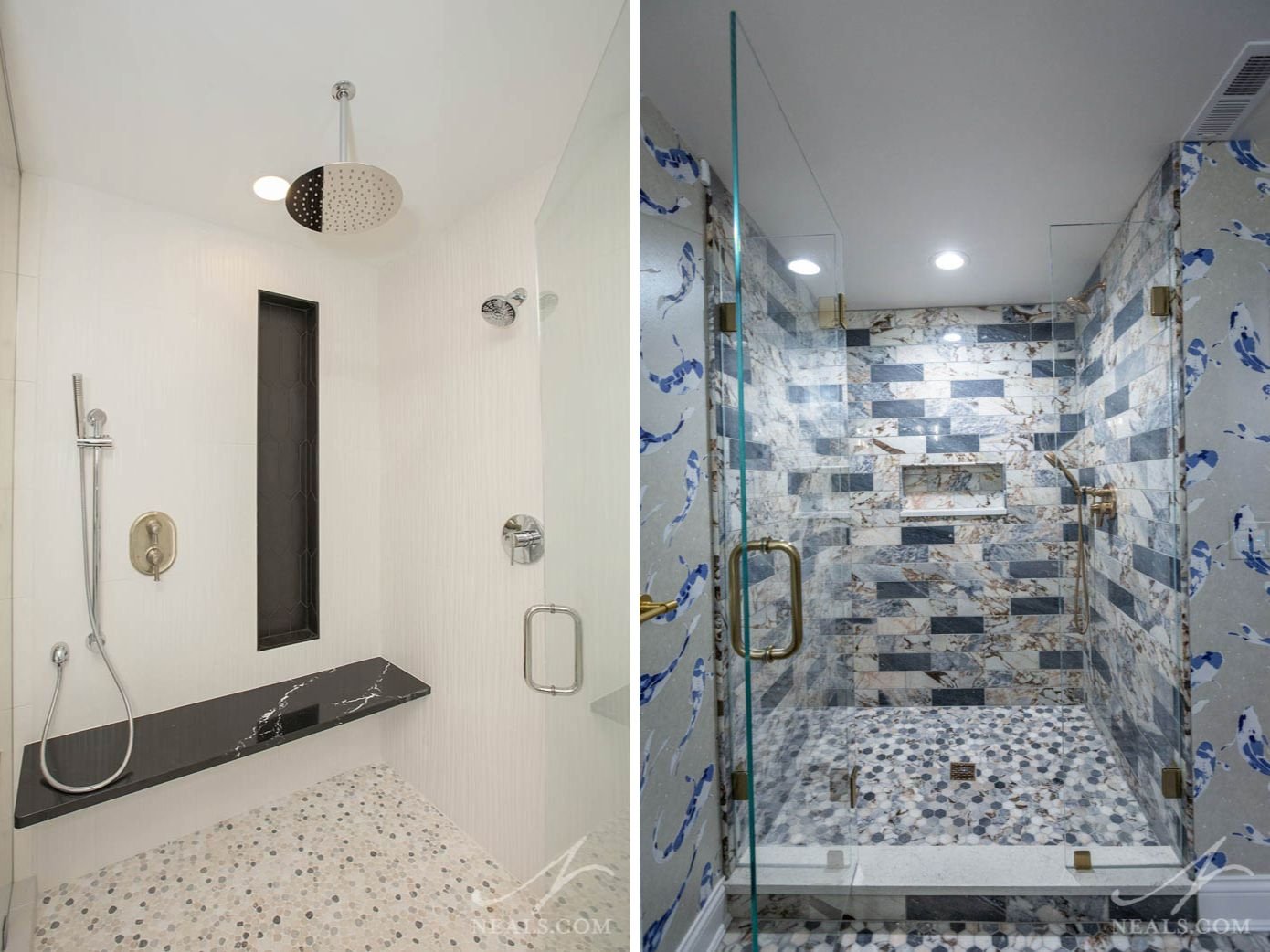
Alternatively, if you crave a bolder statement, tiles in non-neutral colors, whether deep or pastel shades, maybe a great choice. Vivid or distinctive colors will infuse your bathroom with personality and drama, creating a playful space that can awaken your senses, which may be better suited to your lifestyle, tastes, and needs. If this is the way you think you’d like to go, be sure to consider what colors you like before selecting an option that’s trendy or quirky to be sure that you’ll enjoy it for the long term.
Shape & Scale
Tiles are defined by their shape and size, but we often dismiss how this factor plays into the overall look of the tile installation. Consider the difference between a penny tile with its prominent grout and an oversized rectangle tile that can make the grout lines nearly invisible. Or a herringbone pattern of rectangular tiles compared to hexagon-shaped tiles. In today’s tile market, there’s no shortage of different shapes and sizes to choose from and each will add its own visual interest, architectural flair, and general style vibe.
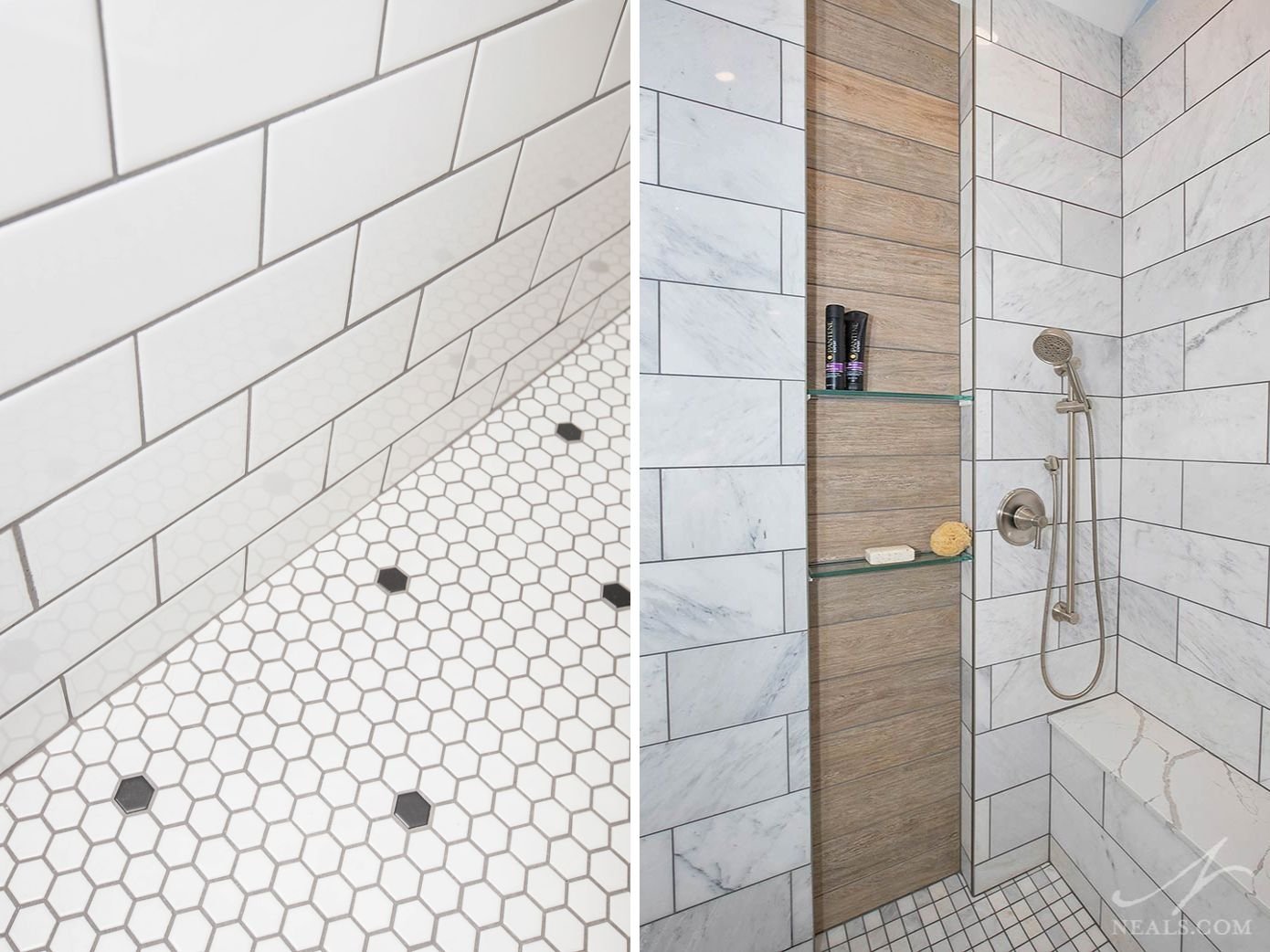
When it comes to shape and scale, the overall design style you wish to achieve often points toward what might work best. If you prefer a traditional style, a timeless subway tile or small-scale square tiles will evoke a sense of nostalgia and charm. If you’ve got a more modern style in mind, large-format squares or planks with a minimal look might be a good choice. If you’re looking for something unique, check out the range of tessellated tiles that are available now with unique forms that fit together to create interesting patterns.
Texture
Tiles, like all materials, also have a tactile dimension. Texture adds interest and sometimes additional visual depth to your bathroom surfaces. This can make a flat surface seem more dynamic and engaging. Texture in tile design can come in a few different ways. A different type of finish, such as high gloss or matte, can create a sense of texture that doesn’t change the tile from being a flat surface. Alternatively, a molded or specialty tile can have 3-dimensional surfaces that create texture in a more obvious way. Embossed details, mixed media tiles, or hand-carved designs are also texture-infusing options.
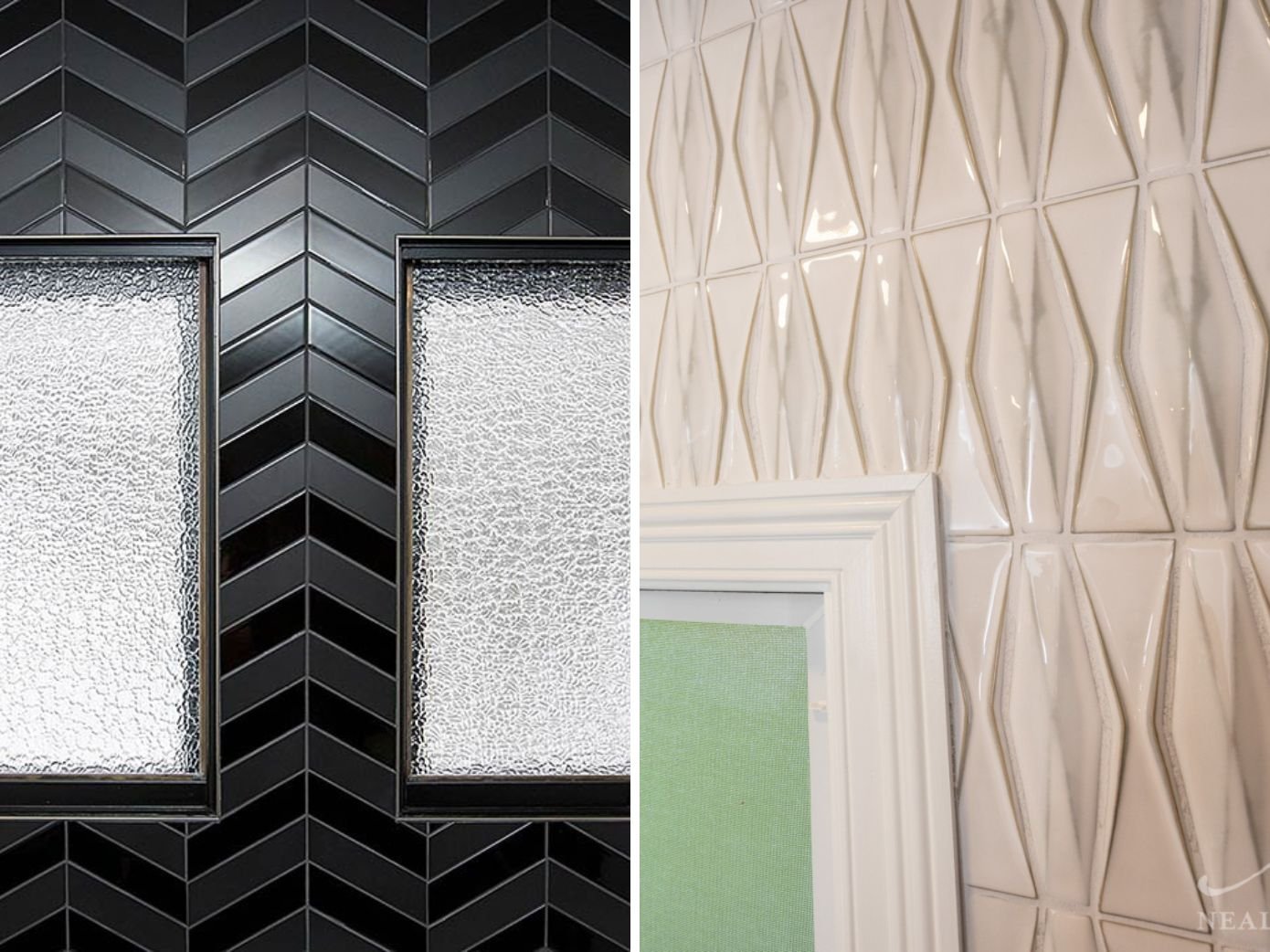
One way to think about texture is to consider how the tile surface will interact with your bathroom’s lighting. Reflective tiles or tiles that cast subtle shadows will create a different look than a typical satin-finished flat tile. Also consider that different materials, even when flat, will feel different when you touch them. A natural stone tile-like marble will feel different than a ceramic tile with a glazed finish. This is especially a consideration in shower tile design, where touching the surface is a guarantee.
Pattern
Patterns add a sort of rhythm to your bathroom, guiding the eye and creating visual intrigue. Though pattern can be created from the way a tile is installed, it can also come from the design of the tile itself. This also means that interest can be heightened by layering the pattern on the tile with how the tiles are laid together on the surface. Which can get a bit overwhelming if not carefully considered but can have amazing, one-of-a-kind results.
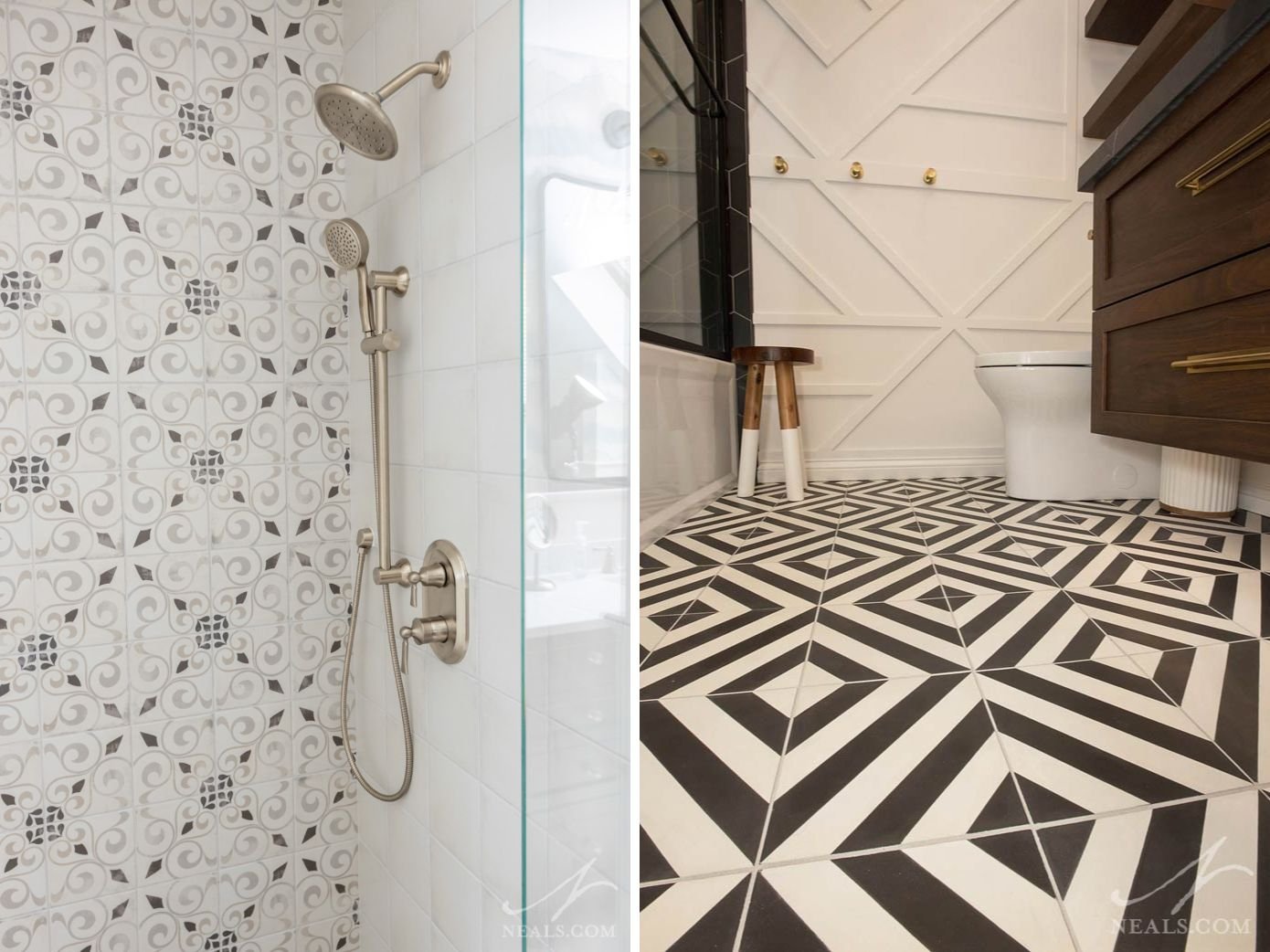
Tiles with contrasting or bold patterns can create a dramatic effect in the smaller space of a bathroom. This can be a great way to get playful or add a designer punch to the space. For a more understated look, opt for tiles with tone-on-tone patterns, or tile mixes that create patterns just through a variety of colors or textures. However you choose to go, it’s important to think through the impact of the pattern on the space. The pattern should feel proportional to the size of the area it will occupy so that the final look is balanced and appropriate.
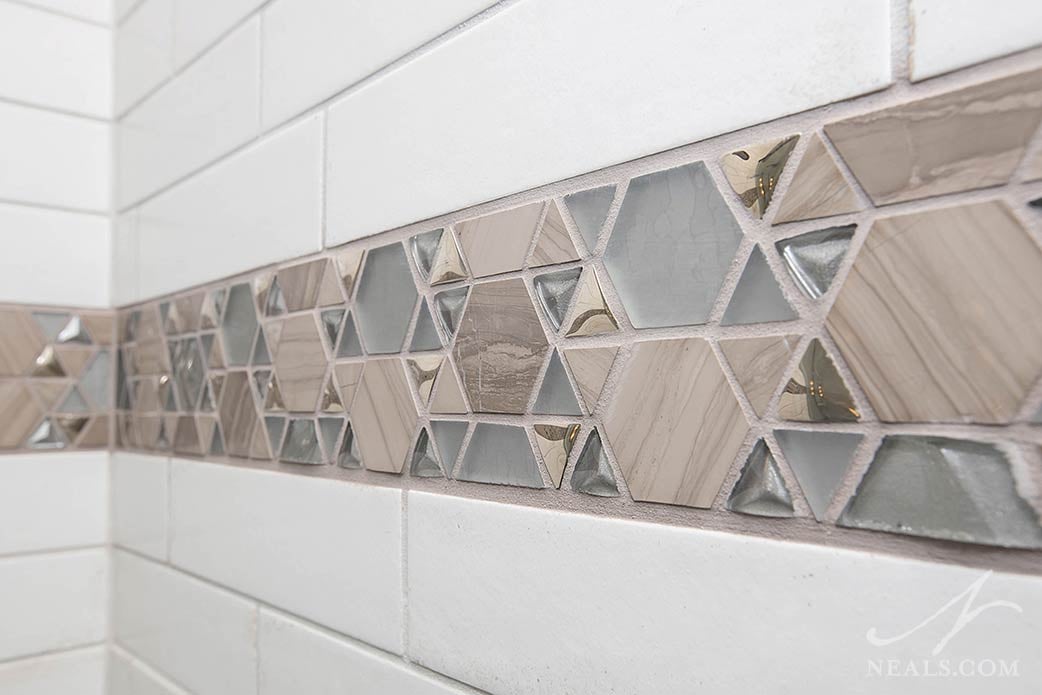
By considering the color, shape, size, texture, and pattern of your bathroom’s tile, you can create a truly unique and enjoyable bathroom that reflects your style and elevates your everyday. There are thousands of options out there, so the other fixtures in your space and the assistance of a professional can help you narrow down the options. In the end, tile is a personal choice, but if you keep these four factors in mind in your selection process, you’ll have a hard time going wrong.











